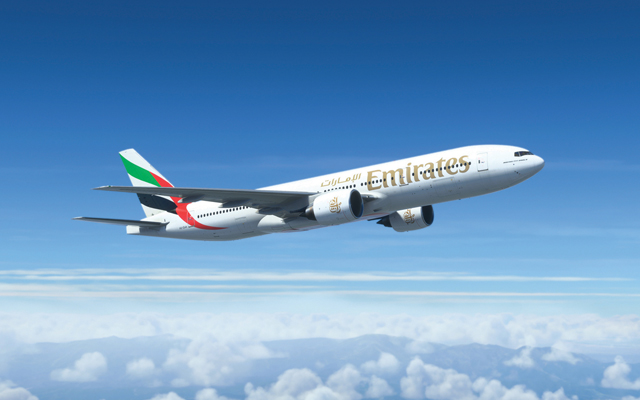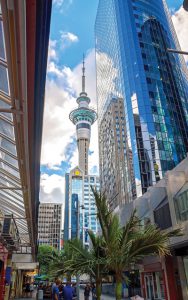Asia-Pacific’s aviation sector continues to trail behind other geographical regions in terms of recovery, even as the last of the remaining few travel barriers are lifted. On the bright side, airlines are rolling out new routes and inspiring new travel possibilities

Limited seats and high airfares have slowed travel recovery across Asia, with experts predicting traffic volumes will only return to pre-pandemic levels by 2024 as airlines increase frequency and routes.
According to figures from the Association of Asia Pacific Airlines, international traffic in Asia-Pacific sat at 52 per cent of 2019 levels in January 2023, with Asia recovering much slower than other regions, due to travel restrictions remaining in place much longer.
The figures revealed that South-east Asia’s recovery in particular have tracked below the global average, with Indonesia, Malaysia, and Thailand lagging, while the Philippines and Vietnam were above average. Vietnam now sits well above pre-Covid-19 levels.
The Asian Development Bank reports that domestic traffic in South-east Asia could reach 100 per cent of 2019 levels by the end of 2023, while international traffic is predicted to hit 90 per cent. In 2Q2023, international seat capacity for South-east Asia hit about 76 per cent recovery, with the full reopening of China expected to aid recovery throughout the rest of the year.
“Airlines have been steadily restoring flights in the South-east Asia-China market since January 2023, when quarantine restrictions in China were lifted, but flights are often added to the schedules with very short notice,” the report noted.

It added that by the end of 3Q2023, the South-east Asia-China market could reach 70 to 80 per cent, contingent on airlines securing approvals for additional flights. However, securing approval from Chinese authorities for additional flights has so far been a “slow and gradual process”.
Mayur Patel, head of Asia at OAG Aviation, said that while current schedules show a 98 per cent recovery to pre-pandemic 2019 levels, a full recovery in global capacity is not expected before March 2024.
He added: “As consumers continue to search for fresh experiences, pent-up demand will carry on driving traffic to regional Asia-Pacific destinations over the next 12 months.”
Patel said the reopening of China’s borders and the anticipated travel boom will play a major role in the region’s full flight recovery.
“Most regional travel associations and carriers are predicting traffic volumes to return closer to pre-pandemic levels, despite economic and geopolitical headwinds, by 2024,” he noted. “As for the broader recovery, this will be dependent on how the outbound market from China recovers in the near term.”
He said some of the bottlenecks lie in getting slots for foreign carriers approved by China. For example, capacity recovery has been distorted with Chinese carriers having a larger capacity share.
Pointing to Singapore as an example, Patel said overall capacity for June 2023 compared with the same period in 2019 has shown overall recovery of 54 per cent. However, the two large Chinese carriers, Air China and China Southern, have reinstated 81 per cent and 75 per cent of capacity respectively, while Singapore Airlines Group has only been able to reinstate 58 per cent of its capacity between Singapore and China.

“The Chinese regulators have been somewhat restrictive with the granting of slot allocations to airlines, especially to foreign carriers, which can be attributed to a phased approach for outbound travel that has been slower than anticipated by the market,” he told TTG Asia.
Patel added that other regulators across the region are also imposing restrictions. For example, the Indonesia regulator is imposing restrictions on Singapore Airlines’ flights from Singapore to Jakarta.
“This can be seen from schedules filing for which this city pair has only recovered two-thirds of the frequency from 2019 levels. In comparison, Singapore to Bali has recovered fully,” he added.
On a brighter note, recent schedule announcements made by airlines operating in this region continue to show confidence, with new and additional services planned besides reinstating former ones.

Emirates unveiled plans to deploy a fleet of 85 A380s, taking the total to 95 by the end of next March.
Adnan Kazim, chief commercial officer at Emirates, said the airline operates about 3,080 departure flights a week globally and is currently exploring adding more capacity to markets, including China.
Furthermore, additional flights to New Zealand’s Christchurch and Auckland as well as Australia’s Sydney and Melbourne will take off on July 15, as well as Singapore on June 1, strengthening operations in the Asia-Pacific region, increasing competition and driving down fares.
Low cost carrier AirAsia is also pinning hopes on China pushing its rebound. In addition to the carrier flying to nine destinations in China, it recently unveiled new services from Kuala Lumpur to Quanzhou, Guilin and Chengdu, beefing up weekly flights between the two nations to more than 129.
Benyamin Ismail, AirAsia X Malaysia CEO, said: “As China is rapidly bouncing back, we expect to launch even more flights to the country, as well as increase frequency on the most popular and profitable routes within our network in the short- to medium-term.”
Earlier in February, when the airline announced its resumption of China services, Benyamin said that its services to the country had seen “tremendous success”, with over 1.8 million guests carried to and from China in 2019 alone.
As travel appetite ramps up, Hong Kong Airlines is stepping up operations, with new services between Hong Kong and China’s Beijing, as well as Hong Kong and Japan’s Fukuoka, besides reinstating services to Bali’s Ngurah Rai International Airport and Shanghai’s Hongqiao International Airport.
New entrant, Thailand-based full-service Really Cool Airlines, said in May that it plans to commence flying in 1Q2024. Its initial routes are likely to include Singapore, Tokyo, Hong Kong and Taiwan, with European routes to be added in 2025.
Patel said factors that would drive full recovery in the region included developing a dual-brand strategy to increase low-cost offerings while simultaneously tapping into the luxury market. For example, through the pairing of Cathay Pacific and HK Express, Qantas and Jetstar, and Singapore Airlines and Scoot.
He predicted a “significant” increase in demand for Bali, Vietnam, Thailand, South Korea and Japan.
“This surge in traffic can be attributed to a growing trend among travellers seeking out more personalised experiences and to explore new, previously unexplored destinations.”
But he cautioned that the road to full recovery is not paved with roses, as airlines have to navigate major challenges such as shortages of staff, spare parts, and engineers, as well as the high cost of oil.
“With the price per barrel unlikely to fall in 2023, air fares will remain high, at least through the summer season,” he remarked.




















